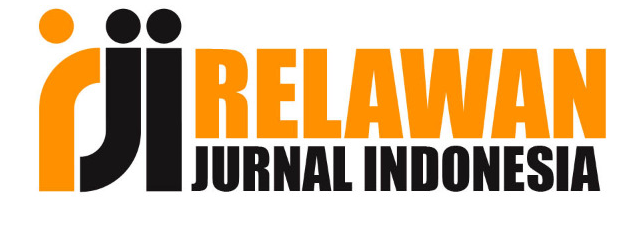Generation Z Antecedent to Chooses Private Islamic Universities
Abstract
References
Alam, M. M., Alauddin, M., Dooty, E. N., Chowdhury, M. M., Sharif, M. Y., & Hasib Ahsan, S. M. (2021). Satisfaction and University Reputation through Service Quality in Private Higher Educational Institutions in Bangladesh Article in Journal of Asian Finance Economics and Business. Journal of Asian Finance, 8(9), 91–0100. https://doi.org/10.13106/jafeb.2021.vol8.no9.0091
Arpan, L. M., Raney, A. A., & Zivnuska, S. (2003). A cognitive approach to understanding university image. Corporate Communications: An International Journal, 8(2), 97–113.
Brilianti, A. E. (2023). The Representation of Character Education in the Movie Sang Prawira Based on Thomas Lickona’s Theory. Pioneer: Journal of Language and Literature, 15(2), 388. https://doi.org/10.36841/pioneer.v15i2.3242
Darmawanto, D. N., & Haryanto, B. (2019). How Does The Attitude Moderate The Effect of Education, Campus Reputation and Education Facilities on The Intention of Choosing The University. European Journal of Business and Management Research, 4(3), 1–7. https://doi.org/10.24018/ejbmr.2019.4.3.61
Diktis Kementerian Agama RI. (2022). Nomor Statistik PTKI (NSPTKI). http://diktis.kemenag.go.id/bansos/cari_nspt.php
Dowling, G. R. (1988). Measuring corporate images: A review of alternative approaches. Journal of Business Research, 17(1), 27–34.
Gamage, K. A. A., Dehideniya, D. M. S. C. P. K., & Ekanayake, S. Y. (2021). The role of personal values in learning approaches and student achievements. Behavioral Sciences, 11(7). https://doi.org/10.3390/bs11070102
Haque, M. (2024). Factors influencing entrepreneurial intention of university students : An empirical analysis from Islamic University , Bangladesh. 23(03), 2220–2230.
Harahap, D. A., Amanah, D., Gunarto, M., Purwanto, P., & Umam, K. (2020). Pentingnya Citra Universitas Dalam Memilih Studi Di Perguruan Tinggi. Niagawan, 9(3), 191. https://doi.org/10.24114/niaga.v9i3.20819
Hariyanti Abd Hamid, Maheran Baharum, & Azizah Sarkowi. (2019). Pengaruh Efikasi Kendiri Terhadap Motivasi Dan Pencapaian Akademik Siswa Pendidik. Jurnal IPDA, 26, 104–113. http://103.8.145.246/index.php/ipda/article/view/8209
Hutomo, A., Marditama, T., Limakrisna, N., Sentosa, I., Lee, J., & Yew, K. (2020). Green Human Resource Management, Customer Environmental Collaboration and the Enablers of Green Employee Empowerment: Enhanching an Environmental Performance. 1(2), 358–372. https://doi.org/10.38035/DIJEFA
Idayati, I., Kesuma, I. M., Aprianto, R., & Suwarno, S. (2020). The Effect of Service Quality on Citizen’s Expectation through Dimension of Tangible, Emphaty, Reliability, Responsiveness and Assurance (TERRA). Sriwijaya International Journal of Dynamic Economics and Business, 4(3), 241–252. https://doi.org/10.29259/sijdeb.v4i3.241-252
Julin, S. K. P. (2015). A framework for measuring student and staff satisfaction with university campus facilities. Quality Assurance in Education, 23(1), 47–66. https://doi.org/10.1108/QAE-10-2013-0041
Kazoleas, D., Kim, Y., & Anne Moffitt, M. (2001). Institutional image: a case study. Corporate Communications: An International Journal, 6(4), 205–216.
Kotler, P., & Fox, K. F. A. (1995). Strategic marketing for educational institutions. Prentice Hall.
Mazursky, D., & Jacoby, J. (1986). Exploring the development of store images. Journal of Retailing.
Mishra, N. R. (2023). Constructivist Approach to Learning: An Analysis of Pedagogical Models of Social Constructivist Learning Theory. Journal of Research and Development, 6(01), 22–29. https://doi.org/10.3126/jrdn.v6i01.55227
Mishra, S. (2020). Social networks, social capital, social support and academic success in higher education: A systematic review with a special focus on ‘underrepresented’ students. Educational Research Review, 29(December 2019), 100307. https://doi.org/10.1016/j.edurev.2019.100307
Obling, A. R. (2023). Professional identity reconstruction: Attempts to match people with new role expectations and environmental demands. Management Learning, 54(4), 468–488. https://doi.org/10.1177/13505076211070906
Rahim, A., & Munshi, A. (2023). What Influences Admission Decisions In Higher Education ? Role of University Brand Personality and University Brand Image- A PLS-SEM , IPMA and ANN What Influences Admission Decisions In Higher Education ? Role of University Brand Personality and Universi. March.
Rickes, P. (2016). Generations in Flux: How Gen Z Will Continue to Transform Higher Education Space. Planning for Higher Education, 44(4), 21.
Sathapornvajana, S., & Watanapa, B. (2012). Factors affecting student’s intention to choose IT program. Procedia Computer Science, 13, 60–67. https://doi.org/10.1016/j.procs.2012.09.114
Seemiller, C., Grace, M., Dal Bo Campagnolo, P., Mara Da Rosa Alves, I., & Severo De Borba, G. (2019). How Generation Z College Students Prefer to Learn: A Comparison of U.S. and Brazil Students. Journal of Educational Research and Practice, 9(1), 349–368. https://doi.org/10.5590/jerap.2019.09.1.25
Solikhah, A., Hartoyo, H., & Yuliati, L. N. (2016). The Influence of Personality, Motivation, Brand Image, and Environment on Students’ Intention in Choosing Bogor Agricultural University (IPB). Journal of Consumer Sciences, 1(1), 14. https://doi.org/10.29244/jcs.1.1.14-32
Sugiyono. (2017). Metode Penelitian Bisnis: Pendekatan Kuantitatif, Kualitatif, Kombinasi, dan R&D. CV. Alfabeta.
Sulastri, E., & Satispi, E. (2021). Innovation in the Development of the Islamic Religious Education Curriculum in Secondary Schools. 1(3), 86–93.
Trevino, N. G. (2018). The Arrival of Generation Z on College Campuses. ProQuest LLC, 1–158. https://ucd.idm.oclc.org/login?url=https://search.proquest.com/docview/2101883798?accountid=14507%0Ahttp://jq6am9xs3s.search.serialssolutions.com?ctx_ver=Z39.88-2004&ctx_enc=info:ofi/enc:UTF-8&rfr_id=info:sid/ERIC&rft_val_fmt=info:ofi/fmt:kev:mtx:disserta
Virginia Koutroubas, & Michael Galanakis. (2022). Bandura’s Social Learning Theory and Its Importance in the Organizational Psychology Context. Journal of Psychology Research, 12(6). https://doi.org/10.17265/2159-5542/2022.06.001
Wibowo, A. J. I., & Widodo, Y. E. (2013). Identifikasi Penentu Intensi Studi Ke Perguruan Tinggi: Studi Kasus Terhadap Unversitas Swasta Katolik Di Indonesia. Jurnal Manajemen, 13(1), 55–72.
DOI: 10.28944/maharot.v8i2.1938
Refbacks
- There are currently no refbacks.

This work is licensed under a Creative Commons Attribution-NonCommercial 4.0 International License.






